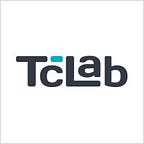HOW TO: Functional Testing in Software Development
Functional testing is a critical aspect of software development that ensures your application performs as expected. This comprehensive guide is designed to help software testers master the art of functional testing, employing best practices to streamline the process.
What is Functional Testing?
Functional testing is a type of software testing that focuses on verifying that a software application’s functions work correctly and meet the specified requirements. This testing phase assesses the application’s behavior concerning user input, data manipulation, and responses to various system conditions.
Functional testing examines both the expected and unexpected functionalities of the software. It ensures that the application performs its intended tasks without any unexpected behavior or defects. The primary goal is to confirm that the software operates precisely as per the functional specifications.
Why is Functional Testing Important?
Functional testing serves various crucial purposes in software development:
- Identifying defects and issues within the application, which could impact its functionality or user experience.
- Ensuring that the software adheres to the documented functional requirements.
- Verifying that the software works seamlessly for end-users, delivering the expected functionality.
- Ensuring that the software complies with industry-specific regulations and standards.
Key Methodologies in Functional Testing
Black Box Testing
Black box testing evaluates the software’s functionality without any knowledge of its internal code. You focus on input, expected output, and the system’s behavior without examining the source code. It’s a user-centric approach that simulates how end users interact with the software.
White Box Testing
White box testing, on the other hand, involves a detailed examination of the software’s internal code. You assess the software’s logic, data flow, and algorithms to ensure that they function correctly.
Grey Box Testing
Grey box testing combines elements of both black and white box testing. You can have partial knowledge of the system’s internal code while still assessing its functionality from a user’s perspective.
Functional Testing Best Practices
- Begin by ensuring that the project’s requirements are well-documented and clearly understood. Establish a robust communication channel with developers, product managers, and stakeholders to avoid misunderstandings and ambiguities. Double check all the information before writing test cases.
- Create a comprehensive test plan that outlines the scope, objectives, and resources required for functional testing. This document will serve as a roadmap for the testing process.
- Effective test cases are the foundation of functional testing. Ensure that your test cases cover both positive and negative scenarios, and prioritize test cases based on risk and business criticality.
- Secure, clean, and relevant test data is crucial. Make sure that your test data mirrors real-world scenarios and edge cases to uncover hidden issues.
- Establish a clear traceability matrix to link test cases to functional requirements. This ensures that every requirement is tested and that you can easily track test coverage.
- Execute your test cases meticulously, ensuring that all steps are followed. Document the results and any discrepancies observed.
- As your application evolves, perform regression testing to ensure that new code changes do not adversely affect existing functionality.
- Don’t limit yourself to scripted tests. Incorporate exploratory testing to uncover unexpected defects and usability issues.
- Accurate defect reporting is vital. TestCaseLab is an excellent tool for this purpose, allowing you to log defects efficiently.
Tools for Functional Testing
Several tools are available to aid software testers in functional testing:
Selenium
A widely used open-source tool for automating web applications, it supports multiple programming languages.
JIRA
An issue and project tracking tool that helps in test case management and bug tracking.
A comprehensive test management tool that assists in test case organization, execution, and reporting.
Postman
A popular tool for testing APIs and ensuring they function correctly.
Applitools
A visual testing tool that helps detect visual anomalies in web and mobile applications.
Streamline functional testing with TestCaseLab
TestCaseLab is a useful tool that streamlines test case creation, execution, and defect tracking. Here’s how it can help you:
- The test management tool provides an intuitive interface for creating and organizing test cases. You can define test steps, expected outcomes, and attach relevant documentation to ensure clear understanding.
- Execute test cases with ease, and record test results directly within the tool.
- Foster collaboration among team members by allowing them to access and contribute to test cases and defect reports.
- Generate detailed reports to gain insights into test progress, defects, and overall quality. Use these reports to make informed decisions and improvements.
Functional testing is an integral part of the software development process, and mastering it requires a combination of best practices and the right tools. By adhering to the principles outlined in this guide and incorporating TestCaseLab into your testing process, you’ll be better equipped to ensure the quality and functionality of your software products, ultimately delivering a better experience to your end-users.
Remember that the key to successful testing is continuous learning and adaptation, so stay curious and open to improvement.
💖 Do not forget to follow us on Linkedin and Facebook to learn more about software testing and tech news.
💎 Try TestCaseLab for free with a 30-day trial subscription here!
Please share this article with those who may benefit from it.
Thank you!
